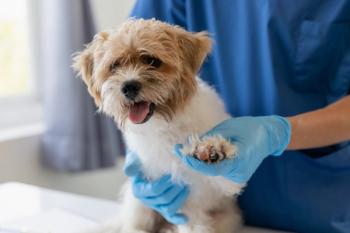
Antimicrobial use in food-producing animals up more than 1 percent, FDA says
Rockville, Md. -- Antimicrobial use in food-producing animals is up nearly 7 percent over last year, according to new estimates from the U.S. Food and Drug Administration (FDA).
Rockville, Md.
— Antimicrobial use in food-producing animals is up by 1.3 percent over last year, according to new estimates from the U.S. Food and Drug Administration (FDA).
FDA issued the new report today, reveals that 13,241,138 kg of antimicrobials were sold and distributed for use in food-producing animals in 2010. Its last report, issued in January 2011, totaled domestic antimicrobial use for 2009 at 13,067,100 kg.
The agency reports that the data collection was mandated to "assist FDA in its continuing analysis of the interactions (including drug resistance), efficacy and safety of antibiotics approved for use in both humans and food-producing animals."
Data is summarized by drug class to protect confidential business information, FDA says. And only those antimicrobial classes with three or more distinct sponsors of approved and actively marketed animal drug products are independently reported, the agency adds.
Annual totals (domestic) for each of the antimicrobial classes include:
• Aminoglycosides: 200,794 kg
• Cephalosporins: 24,588 kg
• Ionophores: 3,821,138 kg
• Lincosamides: 154,653 kg
• Macrolides: 553,229 kg
• Penicillins: 870,948 kg
• Sulfas: 506,218 kg
• Tetracyclines: 5,592,123 kg
• Not independently reported: 1,517,447 kg
Over the past year, half of the antimicrobials saw reduced use, while the other half saw increased use. Aminoglycoside use was down 40 percent over 2009, Cephalosporin use was down 40 percent, Macrolide use was down 35 percent and Sulfa use was down 2 percent. But Ionophores were up 2 percent, Lincosamides were up 33.5 percent, Penicillins were up 42 percent, and Tetracyclines were up 21 percent. Use of “not independently reported” antimicrobials remained relatively consistent, with a decline of less than 1 percent.
For more information, go to
www.fda.gov/cvm
and look for "2010 Summary Report on Antimicrobials Sold or Distributed for Use in Food-Producing Animals."
Newsletter
From exam room tips to practice management insights, get trusted veterinary news delivered straight to your inbox—subscribe to dvm360.




